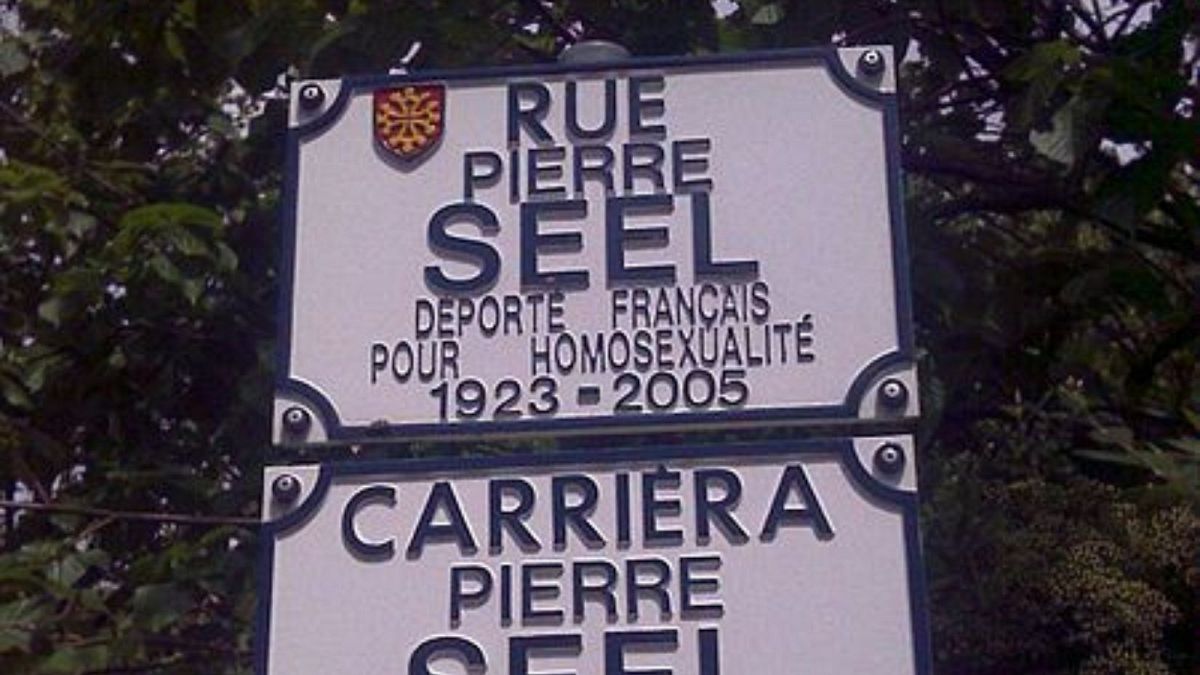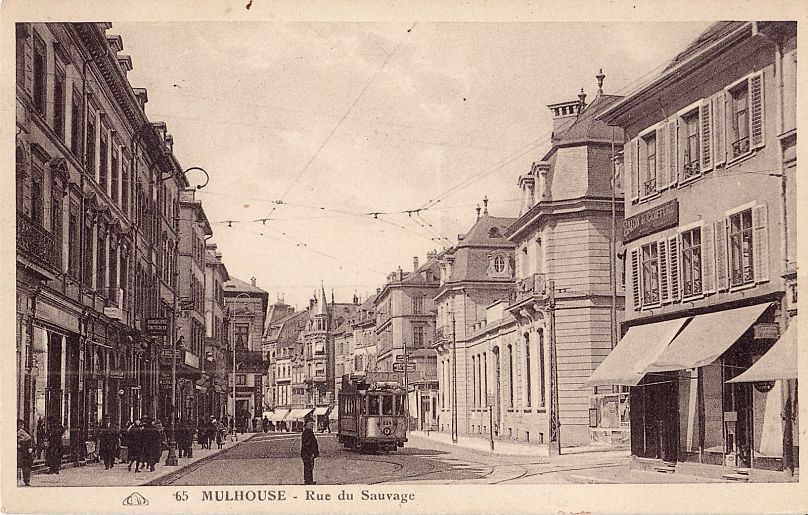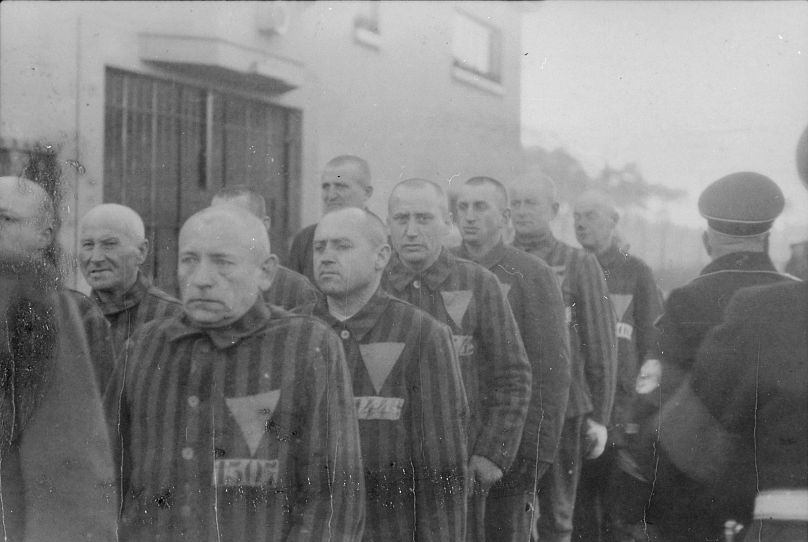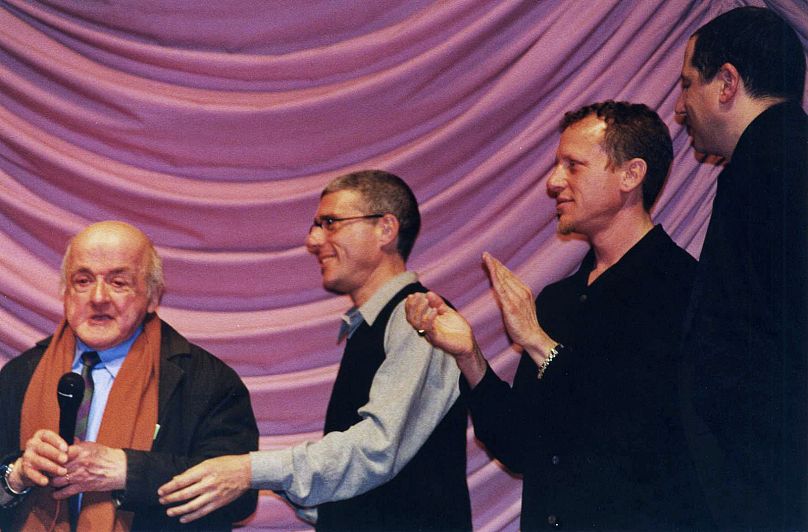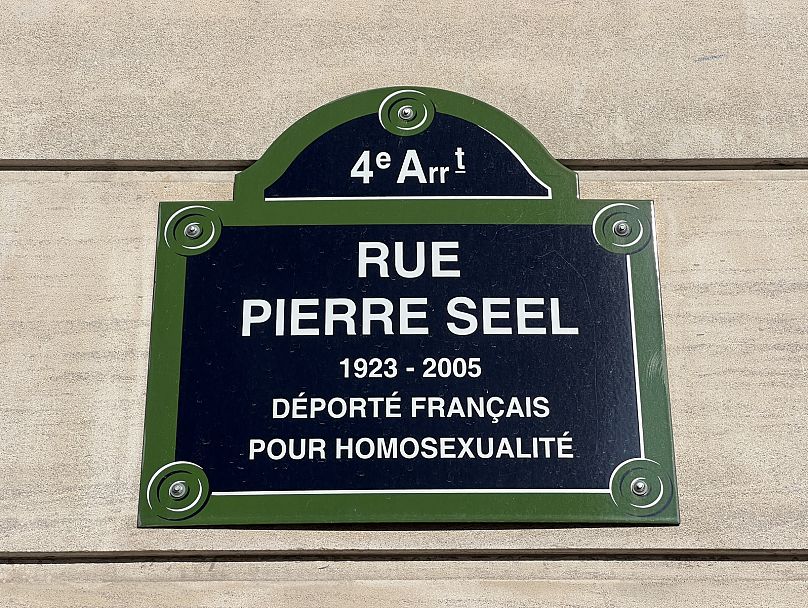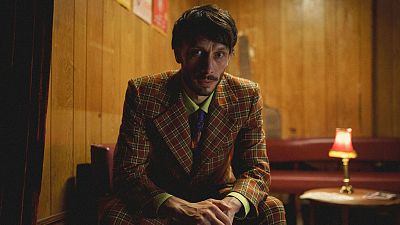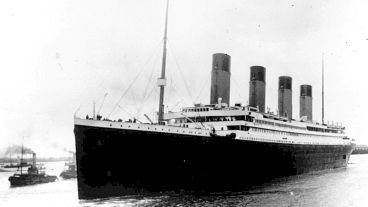On what would have been Pierre Seel's 100th birthday, Euronews Culture commemorates the incredible life of the French Holocaust survivor who defied social conventions to reveal an uncomfortable truth: the experience of Nazi Germany's gay victims.
"I was seventeen years old, and I knew cruising the square located on the route between my school and my home was risky... How could I know [a] trivial incident would shake up my life and destroy it?"
With these words, the French Holocaust survivor Pierre Seel opened his 1994 memoir, 'I, Pierre Seel, Deported Homosexual', which became a pioneering first-hand account of life as a gay Holocaust victim, at a time in which queer survivors had been unable to openly share their testimonies.
At the time of its publication, Seel was already an elderly man living in Toulouse, battered by a life of trauma and desolation. Homophobia was rampant, the HIV/AIDS crisis was still at its peak, and public awareness of gay Holocaust survivors was painfully lacking. Many were even shunned from memorial events.
Yet, determined as ever to speak his truth - and be a voice for all others like him - Seel decided it was time for his story to be told. He would end up fighting tirelessly for the rights of gay survivors like himself, a cause he brought to his grave 11 years later.
Seel celebrates what would have been his 100th birthday today - Wednesday 16 August. Euronews Culture looks at his incredible life - one marked by tragedy, betrayal, and desperation, but, ultimately, resilience and hope.
A carefree childhood: Pierre Seel's life before the war
Pierre Seel was born on 16 August 1923 to a bourgeois family of pâtissiers in the Alsace region of France.
Aware of his burgeoning homosexuality from a young age, he felt at odds with the world that surrounded him, and ended up confiding in a friend - Jo, whom he'd eventually call his boyfriend.
He became a Zazou - one of the hip French teens who worshipped American jazz culture - and dreamed of studying textiles in Lille.
Such aspirations, nevertheless, were brutally crushed as soon as the Nazis set foot on French soil.
The German army invaded Seel's hometown, Mulhouse, in June 1940. At the time, the Third Reich had already been cracking down on homosexuality back in Germany. They had amended an existing law outlawing male same-sex activity (Paragraph 175), turning what was once a misdemeanour into a felony, and deporting thousands of gay men.
By then, Seel was a sexually active teenager, attending Mulhouse's main cruising spot.
One day, his a watch, a communion gift he cherished deeply, was stolen. An unsuspecting Seel reported it to a policeman, not knowing he had effectively signed his own arrest warrant.
As the officer - a family friend - knew what the spot represented, he added Seel's name to a list of "suspected" homosexuals. At that point, he was merely subscribing to an outdated practice. Indeed, same-sex activity was not a crime in France - and nothing came of it at first. Seel went on with his life, increasingly fostering his romantic relationship with Jo, blissfully unaware of the fact that the Gestapo had gotten their hands on that list.
Betrayal, torture and heartbreak: Seel's life in the camp
On 3 May 1941, a 17-year-old Seel was arrested, tortured, and sent off to Schirmeck, a concentration camp near Mulhouse. He was one of the 15,000 or so men sent deported by the Nazis on account of their homosexuality.
Unlike gay Holocaust prisoners in other camps forced to wear pink triangles, gay deportees at Schirmeck, like Seel, were given a blue bar instead.
Conditions for gay deportees were brutal. Victims endured disturbing, creative, even, acts of torture, abuse, violence, sexual molestation and medical experiments to "correct" their sexuality. Seel was not spared from the worst of it all. To add insult to injury, pervasive homophobic attitudes among prisoners meant that gay inmates could not expect any solidarity, and were burdened by a profound sense of shame.
"In the universe of inmates, I was a completely negligible element that could be sacrificed at any moment", Seel wrote in his book.
But none of the tortures he faced could compare to the horror of what he witnessed one day.
The camp guards brought one inmate into the middle of the yard mid-roll call, placing a bucket over his head and stripping him naked. They unleashed a pack of German shepherds, who ripped him to shreds.
It was none other than Jo - his boyfriend.
A traumatised Seel - a "ghost" of his former self, as he wrote - was released from Schirmeck six months later. His vicissitudes, harrowingly, were far from over. He was immediately conscripted into the German army - one of the many Alsatians unwillingly forced to fight for their enemy - and sent off to the Balkans and across Europe.
There, he escaped death numerous times, before finally coming home upon the end of the war. His odyssey may have concluded, but a new chapter in his life had started - and it was no means more pleasant than the one preceding it.
What happened to Seel after World War II?
Seel's returned home at the end of the war without any kind of heroes' welcome, much like other gay Holocaust victims. And he was lucky compared to some others - in (West) Germany, where Paragraph 175 remained in force, some victims found themselves re-incarcerated as soon as they were released from the camps.
A vow of silence was imposed upon the Seel household: no one would ask why he had been deported, and he wouldn't tell. Soon enough, those close to him quickly found out, and it resulted in him being disowned by his own godfather.
He found a moment of respite when he came out to his mother, who came to accept his sexuality. Such solace, alas, was quickly dashed when she died of cancer in 1949.
A grief-ridden Seel eventually succumbed to the social pressure laid upon him as a 26-year-old unmarried man. In 1950, he married a Catholic woman he'd met through a dating agency, with whom he ended up having three children.
For a while, Seel adapted to his newfound family life. He ended up working in the textile industry, as he had hoped, and moving around France, before settling in the southern city of Toulouse.
Before too long, the pain of silence and the suppression of his sexual identity was bound to erupt. By the 1970s, his wife, Rose, divorced Pierre, who took to a life of alcoholism and even endured homelessness. Alienated from his loved ones, Seel found himself alone again.
Speaking out: Seel publishes his memoir
The 1970s saw the publication of the first academic and popular accounts espousing the horrors faced by the Nazi victims of Paragraph 175.
Few scholars at the time were willing to tackle the subject, or could hope to receive funding to conduct such research. Gay sex was still a crime in Germany, with over 100,000 arrests made in the two decades after the war, although the punishment had been scaled down by then.
Hope was on the horizon when in 1972, the first eye-witness account of a gay Holocaust survivor - by Josef Kohout, under the pen name of Heinz Heger - was published.
In 1979, a destitute Seel stumbled upon a local bookshop in which Kohout's book was being discussed.
That set a chain of events in motion which would lead to him finally sharing his testimony on French gay magazine, Gay Pied, in 1981.
It was a homophobic sermon from Strasbourg's bishop in 1982 which ultimately sealed the deal. Unable to contain himself, Seel penned a public letter voicing his disapproval, and kickstarted his journey as an activist.
By 1994 - the same year that Paragraph 175 was finally abolished in a newly reunified Germany - Seel came out with his memoir, which he worked on alongside French journalist Jean Le Bitoux.
At the time of its publication, Seel was still indignant, as gay victims of the Holocaust were yet to receive proper compensation. His anger transpires through the book's pages.
"When I am overcome with rage, I take my hat and coat and defiantly walk the streets," he wrote. "I picture myself strolling through cemeteries that do not exist, the resting places of all the dead who barely ruffle the consciences of the living."
Come the turn of the millennium, some of Seel's wishes finally came to fruition - gay victims of Nazi persecution were finally recognised and were deemed eligible to receive compensation.
Seel's memoir received a fair amount of public attention upon its publication. He was invited to interviews and events, and at his story even received silver screen treatment at the hands of Rob Epstein and Jeffrey Friedman, in their acclaimed 2000 documentary, Paragraph 175.
Aside from his relentless activism, Seel's managed to obtain some peace in his private life. He rekindled his relationship with his children and found comfort in the companionship of another man, Eric Feliu, who supported him until the end.
Seel's son, Antoine, confirmed that his final days were spent in relative happiness.
"In the last months of his life, my father was housed by a friend," he stated. "I think he found a certain form of serenity by his side."
Pierre Seel eventually died in Toulouse on 25 November 2005, at the age of 82. He is currently survived by his former companion and three children.
How has Seel been commemorated after his death?
Almost 17 years have passed since Seel's passing, and while his story received some degree of public attention - his book has been translated into several languages - he has largely faded from public consciousness.
Indeed, the Alsace-Moselle memorial and its website make no reference to Seel, despite having been erected a stone's throw away from the camp where he was interned.
All this notwithstanding, certain plaques and roads in his honour have been erected around France.
The latest was on 19 June 2019, when the Paris town council named a street in the city's 4th arrondissement in his honour.
Speaking to Euronews Culture, David Cupina from Les Oublié-e-s, a French association commemorating the Holocaust's queer victims, talked about Seel's legacy and impact on the LGBTQ rights movement.
"He was a model," said Cupina. "He showed us the way... Thanks to him, generations of young homosexuals can learn, without shame, about the past of their community, which resisted Nazism."
Seel's life was remarkable in many ways - a story of immense suffering and pathos, but of a tireless fight for justice.
But, even more crucially, his testimony represented the life of thousands of others who, like him, were deported, abused and forced into a life of silence and resignation, but who were unable to speak out.
Then there were those like Seel's first love, Jo, who were killed in the camps.
We have no public knowledge of who Jo is, or if that was even his real name. Seel concealed his identity for decades. But he never forgot about him, and would have no qualms in speaking to reporters and others about the enduring heartbreak he felt, even as an elderly man.
In honour of Seel's legacy, any commemoration of his life cannot be complete without remembering the love of his life - one taken away from him far too soon.
"When I have finished wandering, I go home. Then I light the candle that permanently burns in my kitchen when I am alone," Seel wrote at the end of his memoir.
"That frail flame is my memory of Jo."
